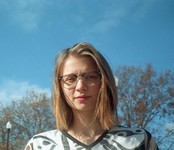The folk melodies and rhythms of the Austro-Hungarian Empire haunted the music programmed for this Greensboro Symphony Orchestra concert with the music of Bela Bartók, Zoltán Kodály, and Johannes Brahms. Two of the composers chosen by music director Dmitri Sitkovetsky – Bartók and Kodály – collected vast amounts of authentic folk music of the region and drew upon it for their compositions. Brahms incorporated the flavor of the heady cultural soup of Vienna in his works. Sitkovetsky featured the orchestra’s principal violist Scott Rawls in Bartók’s Concerto. Dana Auditorium, on the campus of Guilford College, was the ideal acoustical venue.
Kodály’s spectacular Dances of Galánta (1933) opened the concert. The composer spent ages 3-10 in the village of Galánta, where he was exposed to the local folk songs and dances. He found an absence of heart or soul in his earliest compositional efforts, but overhearing a peasant singing a folksong in a nearby room inspired Kodály to collect folk music of the region and to draw upon it for his own compositions. Dances of Galánta makes considerable use of a traditional military recruiting dance, the verbunkos. This is characterized by wide melodic skips and dotted rhythms with alternating fast-slow sections. Syncopation is blended with Turkish, Viennese, and gypsy elements. The piece was commissioned and premiered by the Budapest Philharmonic to commemorate their 80th anniversary.
Sitkovetsky led his musicians in a superb interpretation from its slow introductory verbunkos by the deep rich cello section to the fiery, wild, gypsy-band-like swagger of the later dances. Each orchestra section flawlessly followed every sudden shift of tempo. Among the many fine solos were those of principal clarinetist Kelly Burke, whose playing was ideally idiomatic.
Bartók and Kodály spent many summers going about the region collecting and recording local peasants performing folk music native to their villages. Bartók sublimated the underlying qualities of folk music as he adapted it to his unique, evolving style. His Concerto for Viola and Orchestra, Sz. 120, and his Third Piano Concerto were late works that he failed to complete because of death. Violist William Primrose commissioned the viola concerto performed on this occasion. This performance used the edition completed by his student, composer Tibor Serly (in turn advised by Primrose) in 1949. Serly organized scattered papers of the viola part and orchestrated the score based on the composer’s spare notes and deathbed suggestions. It is in three movements: Allegro moderato, Lento, and (Finale) Allegretto, played without break.*
Rawls opened the concerto solo, producing a full rich tone that was readily projected into the hall. Bartók gives the soloist few opportunities to rest. Rawls gave a fervent, stylish interpretation playing with excellent intonation, consummate articulation at all tempos, and refined control of dynamics. His warm tone was a constant pleasure. Sitkovetsky led a carefully balanced accompaniment. Among the many fine solos were bassoonist Carol Bernstorf’s supporting the transition from first to second movement, and the trombones, led by Brian French, in the transition to the Allegro vivace. The latter had wild, sweeping parts for soloist and orchestra the evoked the spirit of hotblooded gypsy bands.
Brahms’ Symphony No. 3 in F, Op. 90, is one of his most tightly scored works and one with the least-obvious folk-music influence. Most past performances of this work have given me the impression of a bittersweet, autumnal mood. Sitkovetsky blew the dust off tradition for his energetic and vivid interpretation. The first movement had the dramatic, tight intensity more often heard in performances of the First Symphony. The slow second movement had plenty of full, warm melody without a loss of momentum. The last two movements had a strong rhythmic underpinning. There were a plethora of fine instrumental solos from clarinetist Burke, flutist Debra Reuter-Pivetta, oboist Mary Barret, Anna Lampidis, English horn, and in the French horns, led by Robert Campbell. This was a luxurious, opulent evening of fine orchestra playing of beautifully scored works.
This program repeats Saturday, February 23. See our sidebar for more information.
*Triangle residents have another opportunity to hear the Viola Concerto when George Taylor performs it with the Chapel Hill Philharmonia on March 10. See our calendar for details.











